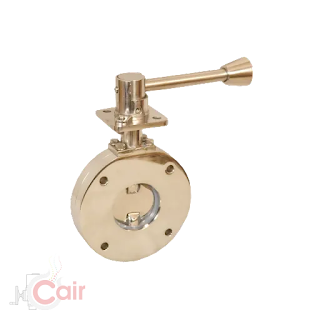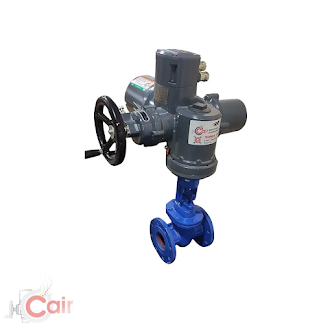What is a motorized ball valve?
In a motorized ball valve, electricity is used to operate the ball valve. This type of valve controls fluid flow by perforating, hollowing, and turning a ball. A motorized ball valve has a hole in the center of the ball. To enhance fluid flow or block fluid flow, an electric motor controls the ball's position. Fluid flow can be controlled, directed, guided, and modulated by motorized ball valves. There are three types of motorized ball valves: gas, liquid, and vapor. In a motorized ball valve, the ball is rotated 90 degrees anticlockwise or clockwise to close or open the flow. When the ball hole of a motorized ball valve aligns with the direction of fluid flow, fluid flow is initiated. Ball valves with motors are known for having long service lives and high reliability.
Components of motorized ball valve
Valve body/valve housing
All internal parts of a motorized ball valve are contained in the valve body or valve housing. To make the valve body strong enough to withstand high pressures and temperatures associated with fluid flow, it is made of strong, hard, and rigid materials. In addition to the inlet and outlet ports, the valve body also has the inlet and outlet ports.
Rotary ball
This component has a hole in the middle of its spherical shape. A bore is a hole in the center of the ball. Fluid flow enters the ball through the hole or bore. A motorized ball valve can have a hollow ball or a solid ball. There is a constant opening diameter for a solid ball, which enhances smooth fluid flow. A hollow ball allows more fluid to flow through its valve due to the space inside. In motorized ball valves, hollow balls tend to create more turbulence and high speeds. Despite this, hollow balls in motorized ball valves make them lighter and more affordable than solid balls.
Stem (shaft)
An electric motor is connected to a ball through this component in a motorized ball valve. Motorized ball valves are operated by electric motors through the stem, which transmits power. O-rings and packing rings seal the bonnet as well as the stem/shaft in a motorized ball valve.
Bonnet
A motorized ball valve's bonnet covers the internal components placed on top of the valve body. In a motorized ball valve, the bonnet and the valve body are connected by screws or bolts, and nuts or by welding to prevent leaks. According to the valve's intended use, the bonnet should also be made from strong, hard, and rigid materials that can withstand high pressure and high temperatures.
Seat
In a motorized ball valve, the seat serves as a seal between the valve body and the ball. A downstream seat is placed opposite the downstream seat adjacent to the valve discharge side and an upstream seat is adjacent to the valve inlet side.
Actuator
An actuator is a motorized ball valve that is used to power the operation of the valve. Actuators are powered by electric motors. Semi-automatic and automatic actuators are available.
How does a motorized ball valve work?
Electrical energy is converted into mechanical energy by motorized ball valves. In motorized ball valves, mechanical energy is used to open and close them. By using an electric motor, electrical energy is transformed into mechanical energy. In the following paragraphs, we will examine the workings of a motorized ball valve.
The system is powered. By turning on the electric power, the motorized ball valve opens. Electric current can then flow to the electric motor. As a result, the electric motor starts rotating and transmits mechanical power to open the valve by rotating the shaft. Motorized ball valves require a certain amount of power to open, depending on their size. Typically, motorized ball valves require 12V, 24V, or 48V of DC power or 24V, 48V, 120V, or 240V of AC power to operate.
Through a set of gears, the electric motor's power is transferred to reduce its speed and increase its torque (because speed and torque are inversely proportional). In this way, the motorized ball valve actuator will be able to produce different levels of torque or force based on the geartrain set. Gear trains use torque to turn the stem of the motorized ball, and since the stem is connected to the ball, it will turn as needed.
Types of motorized ball valves
Single-body motorized ball valve
There is only one body on this motorized ball valve. The solid cast valve body of this motorized ball valve reduces leakage. A single-body motorized ball valve is the cheapest of all motorized ball valves. There is, however, no way to clean or maintain this ball valve. Motorized ball valves with a single body are used for less demanding applications. There is a small opening on these valves, they are cheaper, and they are generally disposable.
Two-piece body motorized ball valve
A motorized ball valve consists of two parts, one of which contains the body and end joint and the other attached to it. Two-piece motorized ball valves can be disassembled easily for inspection, cleaning, and maintenance.
Three-piece body motorized ball valve
There are three parts to this motorized ball valve: the body and two end joints. Bolts and nuts connect the three components. Three-piece ball valves make it easy to remove core parts like the stem, seat, and ball from piping systems. Motorized ball valves are designed so that clogged materials can be removed easily, and seals and seats can be replaced without removing tubing from the body. It is, however, more expensive to purchase this type of motorized ball valve.
Cair Euromatic Automation is the leading motorized ball valve manufacturer in India. We offer various types of industrial valves like ball valves, butterfly valves, control valves, and many more.



Comments
Post a Comment